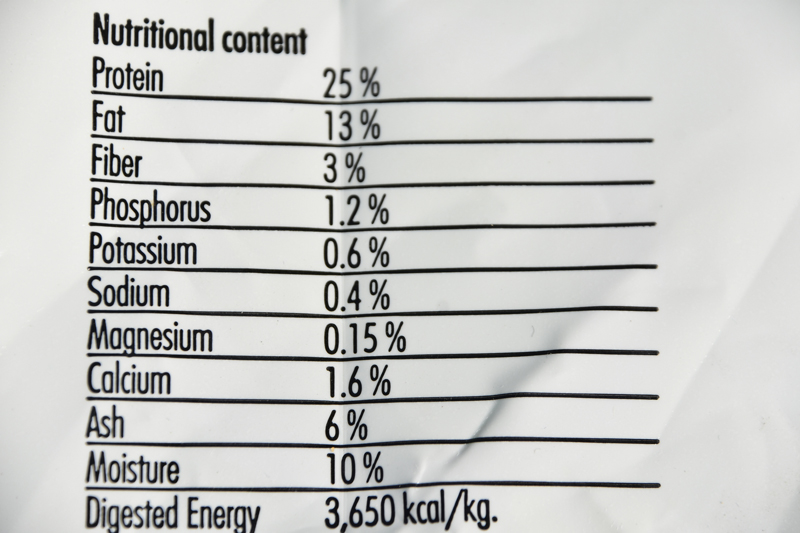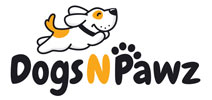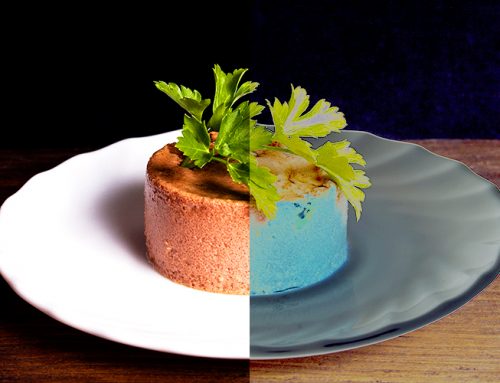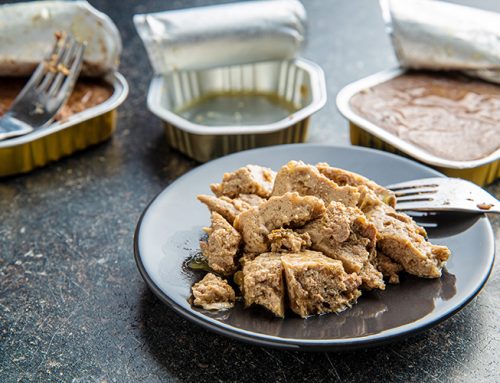What does “grain-free” mean?
Grain-free food typically means the dog food doesn’t contain products including glutenous ingredients like wheat, spelt, rye, triticale barley, and non-gluten products like oats, corn, or rice.
More broadly, grain-free could also mean raw food without any fillers, or air-dried raw food that doesn’t contain grains.
On store shelves, most products being promoted as ‘grain-free’ tend to be commercially produced dry, wet or dehydrated dog foods that instead contain ingredients like legumes, lentils, peas, potato, or sweet potato starches, tapioca, or beet fiber.
How do I select a good quality grain-free dog food?
Look for meat as the first ingredient

All dog food should contain meat as the first ingredient. Meat (protein) is the most important ingredient in all dog foods. Dog food ingredient labels, like human ones, are required to list the ingredients in relation to the percentage they make up the food. So find one that puts the meat first.
More meat, fewer plants. Dogs love protein (you’ve likely been given puppy dog eyes while preparing chicken for dinner) and it’s a staple of their diet. Starches (like potato starch) shouldn’t be the first ingredients in dog food, as this suggests the dog food is low quality and contains a lot of fillers.
Meat is a concentrated source of vitamins (A, E, the B complex, D) and to ensure you’re getting a high-quality product not loaded with fillers, a protein should be the first (and ideally the second and third) ingredient in the list.
Check the protein and fat content of the dog food
Pet foods are required to have a minimum percentage of protein by the Association of American Feed Control Officials (AAFCO). The AAFCO provides minimum requirements for crude protein and fat and sets the maximum percent of crude fiber and moisture that is required in pet food.
Adult dog food requires a minimum of 18 percent of crude protein and 5.5 percent crude fat. Puppy food requires a minimum of 22.5 percent crude protein and 8.5 percent crude fat. This information can be found in the nutrition label of individual food products.

Look for a Guaranteed Analysis
Look for a food labeled “complete and balanced” and make sure it has a Guaranteed Analysis (GA). A GA ensures that the product includes the nutrient profile it claims to have and in the case of “complete and balanced”, meets the nutrient profile laid out by the AAFCO. Food has to either be tested in a lab or taken part in a feeding trial to get this designation, so you’ll know a grain-free food with a GA contains the recommended nutrients for your dog.

Check the carbohydrate content
Grain-free doesn’t mean carbohydrate-free, and there is plenty of information suggesting that no, dogs don’t need carbohydrates to survive.
Fats and proteins are considered essential, while carbs aren’t. But most dog foods contain carbohydrates; grain-free or otherwise. The AAFCO doesn’t set guidelines for how much carbohydrate to include in dog foods.
A general consensus seems to be that while a dog might not need carbohydrates, carbohydrates, in limited amounts, offer dogs easy energy and fiber. Cases can also be made for dogs requiring special, high fiber diets for medical reasons.
Complex carbohydrates are found in grains and vegetables. Other sources of good carbs are dairy products (if they don’t upset your dog’s tummy), some organ meats and oysters, and mussels. The fiber found in beet pulp and peas can also help your dog’s digestive system, and some dog foods contain bamboo fiber.
But the carb content should be low. Unfortunately, there’s no easy way to determine the amount of carbohydrates in any given dog food, grain-free or not, because food producers don’t have to put this information on their packaging. If you’re concerned about the number of carbs in a specific food, you need to contact the manufacturer or visit their website to see if you can get more information.
There can be too much of a good thing. Ideal recommendations for carb content in dog food swing from five to 14 percent of a dog’s total diet. Some dog food formulations may contain 50 or higher percentages of carbohydrate — these foods should be avoided.
Carbohydrates in starch form are critical for dry pet food processing. They stick everything together — and they’re reasonably cheap for producers. They’re just not the best option for nutritional value.
Are the ingredients organic?
Organic dog food comes with a higher price tag, but if the benefits are important to you, and you can swing the cost, look for organic grain-free food.
Organic dog food has to meet the same standards as organic human food. If the label has a ‘USDA Organic’ seal, at least 95 percent of the ingredients are organic. If a dog food is labeled “Made with Organic Ingredients’, at least 70 percent of the ingredients are organic.
If a food is labeled organic, then it’s not genetically modified or grown with artificial pesticides and fertilizers.
Are items in the ingredient list ‘real’ food?

Some dog foods contain long lists of indecipherable ingredients — ingredients you need to be a chemist or other scientist to understand. If you don’t know what something is, a quick Google search can help. But if you don’t know what’s in your grain-free dog food, it’s best to avoid that product. Better to know what’s going into your dog’s stomach in case they have allergies.
Some other troubling potential ingredients are propylene glycol, white flour, unspecified “meat” or “meat meal”, artificial colors, MSG, added gluten, corn syrup, sugar alcohols (like xylitol), nitrates and nitrites, rendered fat, vegetable oil, cellulose, and salt. None of these ingredients need to be in your dog’s food, and don’t belong in your grain-free choice.
Should I be wary of grain-free dog food?
In 2019, the FDA updated a report noting there may be a link between dogs being fed grain-free diets high in potatoes, peas, lentils, and legumes, and an increase in reported cases of canine dilated cardiomyopathy (DCM). DCM is a potentially lethal illness that impacts dogs’ hearts and can also be genetic. The link is still being investigated by the FDA’s Center for Veterinary Medicine, and the number of reported DCM cases (just over 500 by mid-2019) compared to the number of estimated pet dogs in the U.S. (77 million) is low.
Some grain-free dog foods are also now being labeled legume or lentil free, so if you’re worried your dog may have a wheat allergy and needs a grain-free diet, but you’re worried about DCM, a lentil-free, grain-free dog food may be best for your dog.
And remember the basic rule: more meat, fewer plants.






